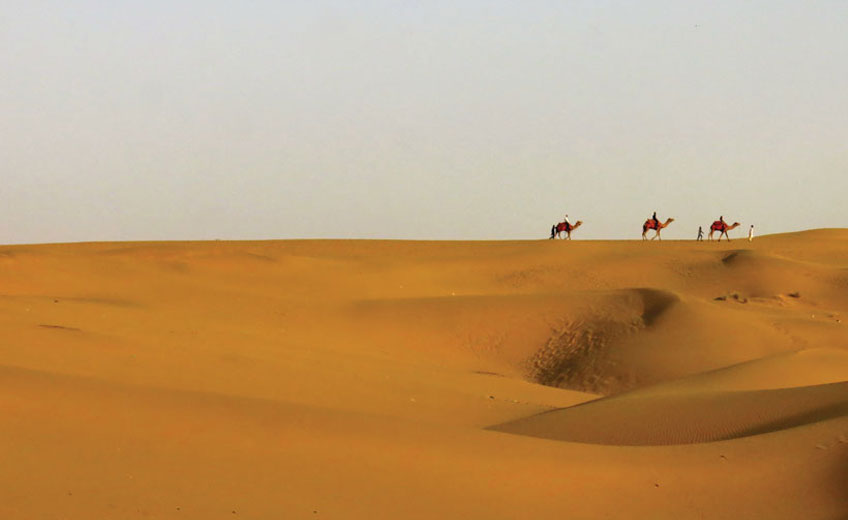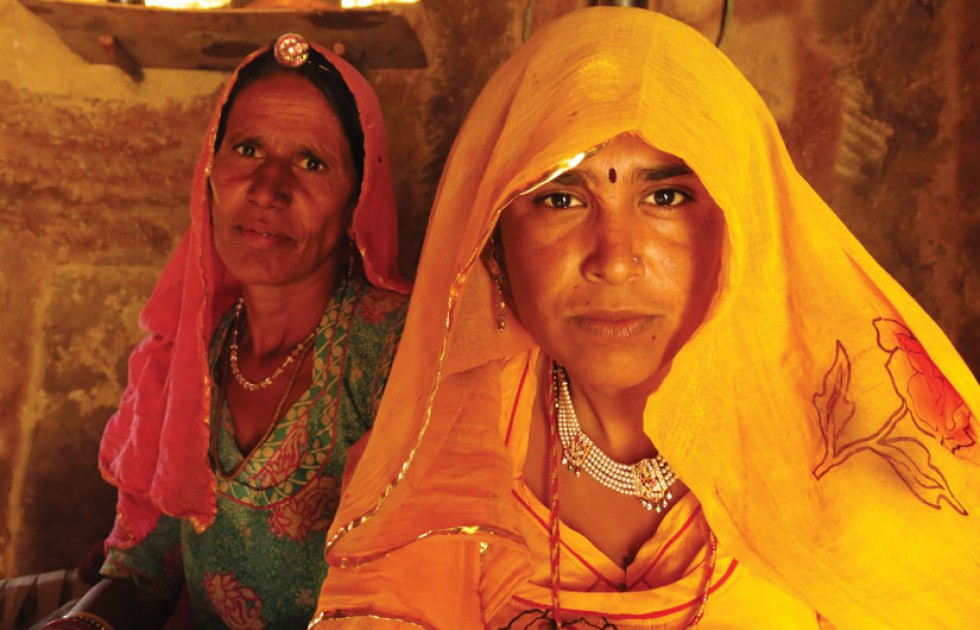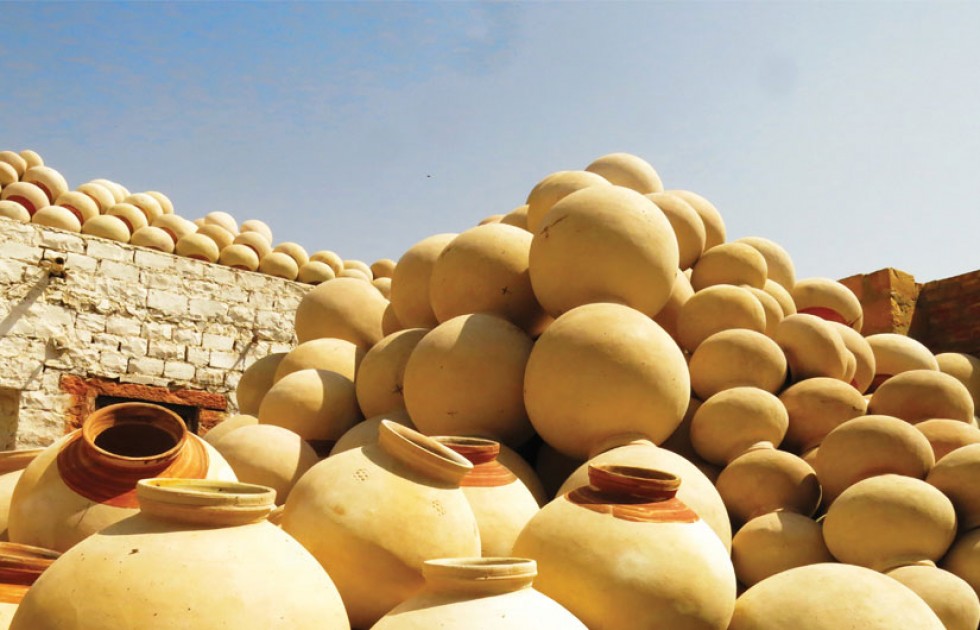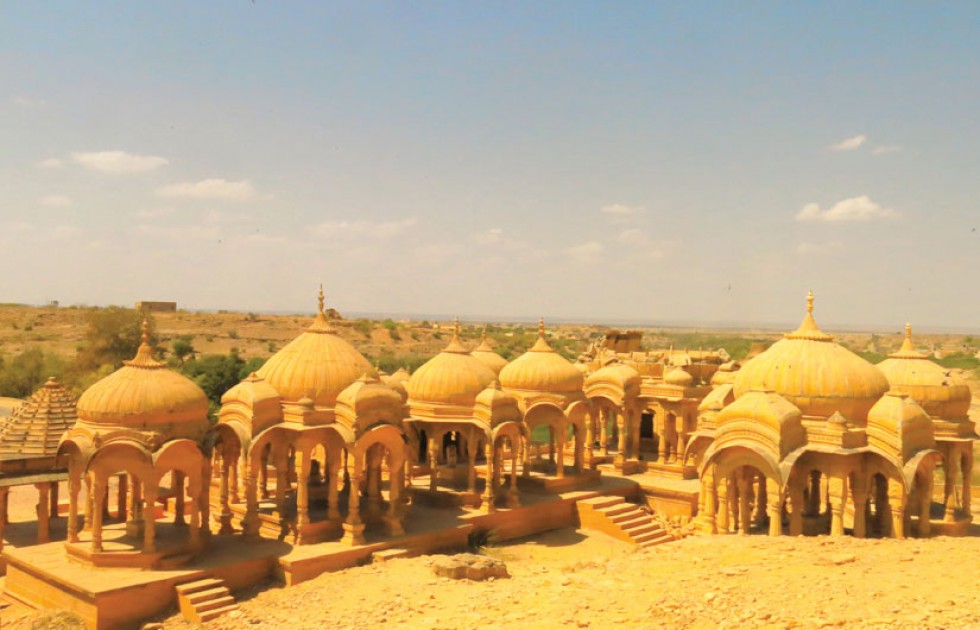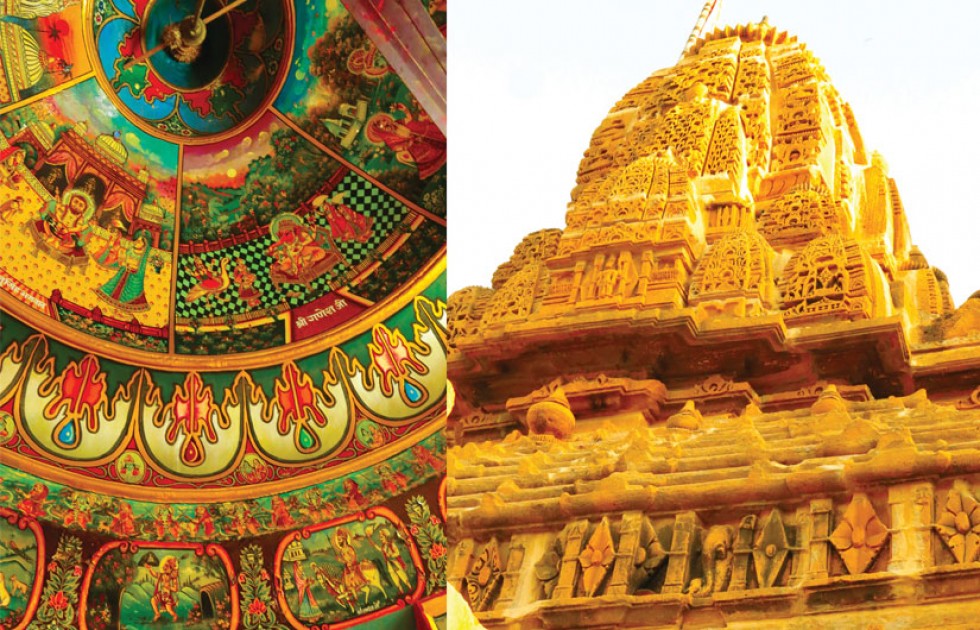At the western frontier of the Indian state of Rajasthan, in the sandy expanse of the Thar Desert, Jaisalmer epitomizes travellers’ dreams of romantic and exotic lands. The “Golden City” is built of honey-coloured sandstone, exemplified by the dramatic medieval fortress in the centre. The surrounding desert offers opportunities to explore rural tribal village life, wildlife and rolling dunes, and to sleep on a camel cart in a vast sandy terrain under a starry sky.
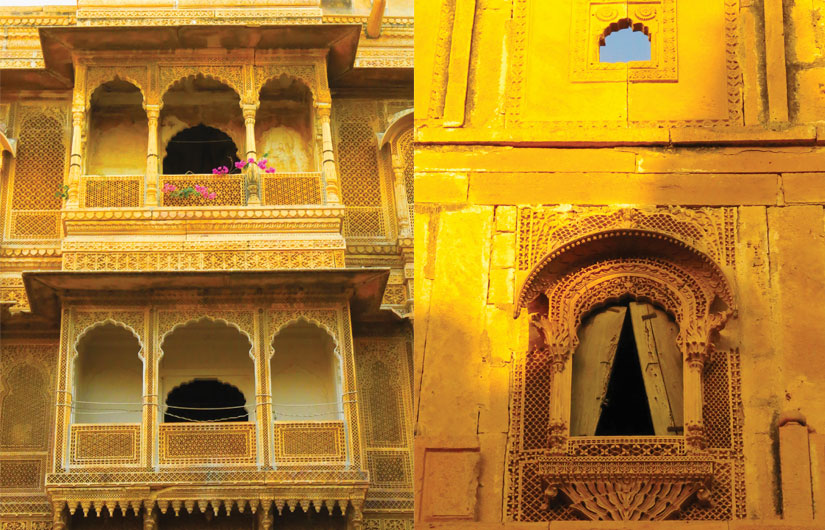
A haveli in Jaisalmer Fort. Inside
Jaisalmer was founded by the Rajput king Rawal Jaisal as a capital in 1156. The kingdom rose to prominence thanks to its position on camel trade routes. Sea trade later replaced traditional land routes, and trade across the India-Pakistan border stopped due to the partition of India in 1947, leaving Jaisalmer largely neglected. The town rose to prominence again when skirmishes between the two countries erupted, turning it into a base for the Indian army. The completion of a paved road in 1958 and railroad in 1968 linked Jaisalmer with the rest of Rajasthan, allowing this remote town to develop into one of the state’s major tourist attractions.
Jaisalmer is a town within a town. The inner or Old Town, on a 76m-high mound, sits within the fortress and comprises around a quarter of the broader town, itself also surrounded by a wall. The Old Town was designed with practicality in mind. The fortress has three layers of walls protected by 99 bastions. As the middle and outermost layers form a snaky lane around the fortress, Rajput warriors could hurl boiling oil and water and boulders from the top of the innermost wall at enemies trapped in the lane. The town’s layout and architecture, with systems for natural cooling and protection against sandstorms, alleviate the harsh desert climate and provide a friendly environment. Today it is inhabited by around 2,000 people.
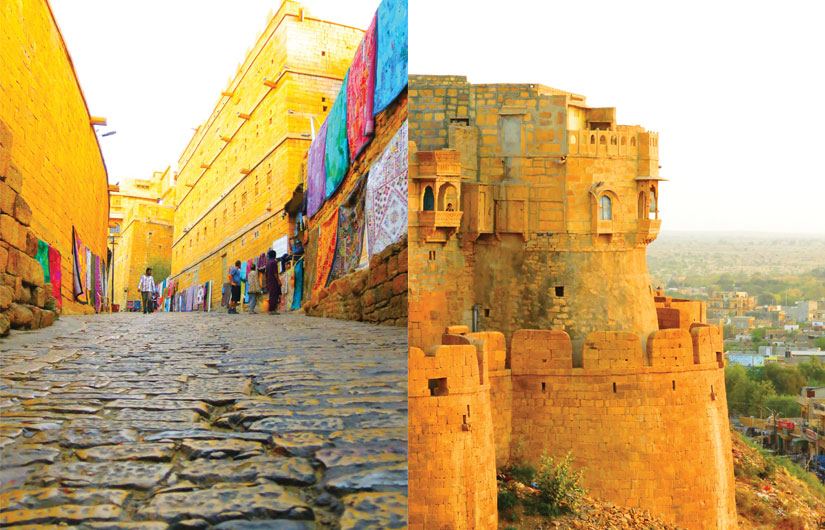
Inside Jaisalmer Fort. / Jaisalmer Fort.
From the northeast entrance court of the Old Town, a paved medieval lane winds up to the main square, which connects the rest of the town through a maze-like network of narrow streets, some flanked with carved facades covered in local arts and crafts for sale, such as rugs, shawls and paintings. While a low narrow doorway of a single or two-storey structure along the street may lead to a family front room or bedroom, haveli (mansions built by rich merchants) boast more complex structures. They have more floors and rooms and balconies with carved archways and facades.
Other notable attractions of the Old Town include the seven-storey Royal Palace with 360-degree views from the rooftop, seven beautiful Jain temples dating from the 15th and 16th centuries, and a Hindu Laxminath temple with a colourfully painted dome. The town also has numerous eateries serving European and Rajasthani cuisine as well as souvenir shops, bookstores and galleries. To cruise into an evening, follow signs to rooftop bars and restaurants atop the fortress’s west wall. They offer hot and cold drinks accompanied by the dramatic descent of the sun into the horizon as the yellowish townscape below becomes swallowed by darkness and sprinkled with lights.
Outside the fortress, the town continues its architectural heritage while keeping the typical atmosphere of an Indian town (complete with crazy vehicular traffic). In the Royal Square is the Royal Palace and an exquisitely ornamented temple. A block of houses and buildings shows carved facades resembling honey-coloured lace. Beautiful architecture aside, there is much in town to keep a visitor busy.
The modern town also has a few haveli. Most are still partly inhabited. Patwa-ki-Haveli is the biggest and most impressive from the outside, while Nathmal-ki-Haveli was once a prime minister’s residence. The Desert Cultural Centre and Museum explains the history of Rajasthan’s former princely states, exhibits traditional musical instruments and textiles, and hosts must-see nightly half-hour puppet shows. For food and shopping, market squares like Gandhi Chowk and Vaishnav Chowk are where to find Rajasthani delicacies such as dal pakwan (crisp thin pizza base topped with yellow dal, onion, chilli and chutney) and kachori (stuffed poori with choice of chutney).


